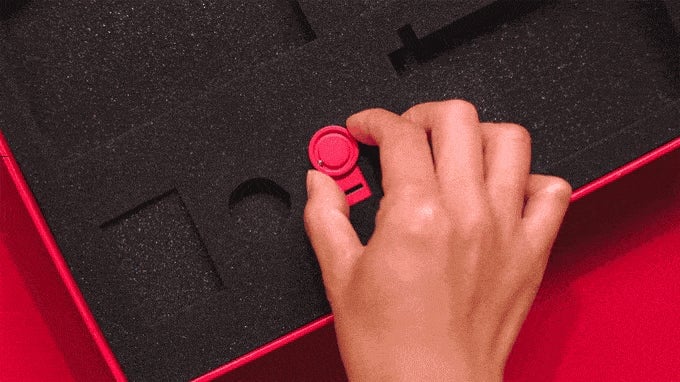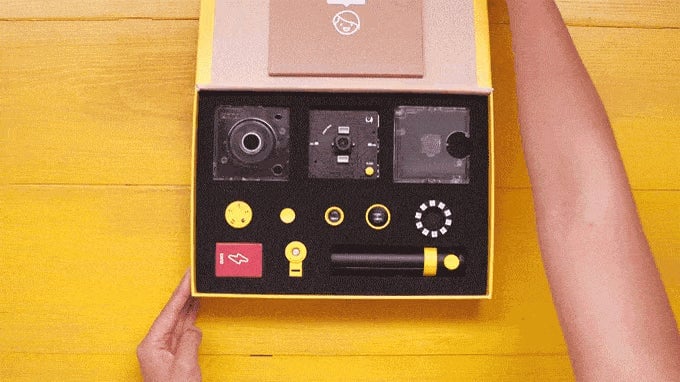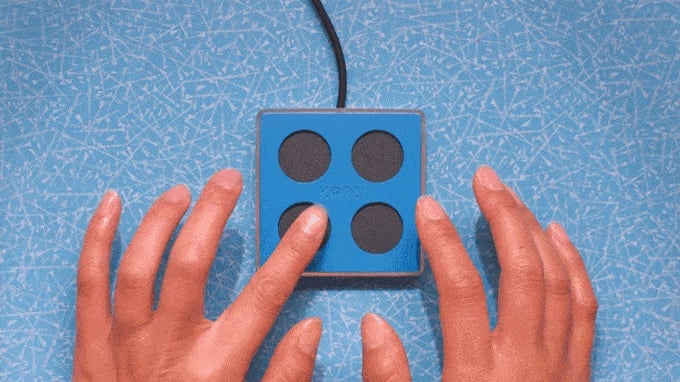These DIY electronic kits will build a new generation of makers
Alex Klein’s 6-year-old cousin posed a challenge in front of him three years ago: “I want to make my own computer. But it has to be as simple and fun as Lego so no one teaches me how to do it.”


Alex Klein’s 6-year-old cousin posed a challenge in front of him three years ago: “I want to make my own computer. But it has to be as simple and fun as Lego so no one teaches me how to do it.”
Shortly after that, Klein, a self-proclaimed “hobbyist geek,” founded Kano along with Yonatan Raz-Fridman, and created a build-your-own-computer kit. It contained a Raspberry Pi, a $35 British micro-circuit board, as the brain, and a bunch of low-cost components from Shenzhen, China: a wireless keyboard, speaker, modular power plug, SD card with SD card reader, among other parts. Then, Klein handed the $150, Lego-like kits to kids with a step-by-step storybook in basic English—complete with illustrations, humor, and anecdotes. (Digital translations are available in Chinese, German, Spanish, Arabic, French, Japanese, Hindi, Hebrew, and Portuguese.)
“The learn-to-code thing that was popping off at the time, and is still in the zeitgeist, was very broccoli and brussels sprouts,” Klein told Quartz. “It was very ‘Learn to do this so you can be Mark Zuckerberg one day’ or ‘Learn to do this or else you’ll be poor and unemployed.'” Klein wanted to make it more exciting for the next generation of coders: make art, make music, control the world around you.
Although the products are geared toward kids aged between 6 to 14 years, people over the age of 80 have experimented with the customizable kit. More than 100,000 of the kits have been shipped to over 86 countries worldwide since 2014. (Half have been sold to Americans and 20% more in the UK.) Kano World, the online community of Kano’s amateur coders, have shared more than 19 million lines of code so far. The kits are also used in over 4,000 educational programs around the world.
Today (Sept. 27), the company is returning to Kickstarter to launch a $500,000 campaign for a series of customizable kits that allow kids to create projects with real world applications. When the company took its maiden project to Kickstarter in late 2013, it set a $100,000 goal—it ended up raising over $1.5 million from more than 13,000 backers, including Apple co-founder Steve Wozniak.
Upcoming products include a pixel kit (which displays patterns with LED lights), a camera kit, and a speaker kit—each retailing at $129.99—that will be released throughout 2017. Each device has room to store up to three pre-loaded apps at a time; these can be swapped in and out whenever you want. This time, the company ditched Raspberry Pi and came up with its own single-board computer. The second-generation kits also come with similar storybook-like instruction manuals. All the devices are battery operated and can standalone from a screen after they have been programmed, making them portable.
Pixel Kit

The light board with 128 LED lights can display data from the cloud or sports scores. It can be used to build games, visualize sounds, and create artwork in 1.7 million colors.
Klein argues that no one has given consumers access to the huge number of affordable components flowing out of Chinese supply chains for use in everyday life. For instance, the Pixel Kit comes with a tilt sensor, which responds to motion to alter the presence and intensity of the lights.
Shipping is slated for Jan 2017, but the first 2,000 Kickstarter backers could possibly get their Pixel Kits in time for the holidays at the end of this year, the company told Quartz.
Release date: January 2017
Camera Kit

This easy-to-assemble five megapixel codeable camera is almost as powerful as the one on an iPhone 5. ”[This generation is] expressing primarily with photo filters and face swapping algorithms that have been designed in some closed Cupertino lab,” Klein said, referring to the location of Apple’s California headquarters. “Shouldn’t we have the chance to frame that for ourselves if we’re going to be taking these photos and videos every day?”
You can code the camera to carry out a variety of functions, such as take a picture when you clap your hands, use a particular photo filter, take pictures of the sunset, and use a flash. The camera comes with a plug-and-play tripwire sensor that uses infrared beams to detect movement. You can code the camera to do something like take a photo every time your pet enters the room by using that sensor.
Release date: May 2017
Speaker Kit

The smart speaker can be used in conjunction with a Gesture Sensor. This means users will be able to manipulate the speaker using their movement and location. For instance, the volume can be controlled by moving your hand closer to and away from the sensor plugged into the speaker.
Additionally, other devices can plug into the speakers to let them do more than just blast music: they can be programmed to record, control and synthesize custom sounds and electronic music.
Release date: July 2017